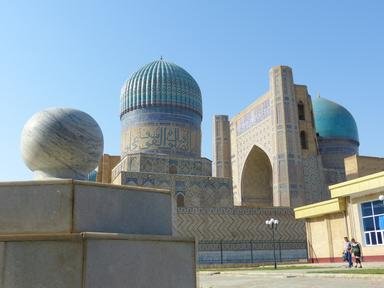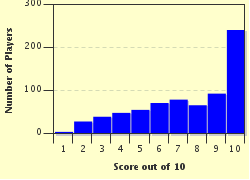Quiz Answer Key and Fun Facts
1. Samarkand is probably the most legendary and enigmatic of Uzbekistan's cities. It was founded around 700 BCE and became rich and prosperous because of its favourable location on the Silk Road. In 1220 CE the city was destroyed and its inhabitants slaughtered by one of the most notorious conquerors in history. Who was this bloodthirsty person?
2. The longest river that flows through Uzbekistan is the Amu Darya. It originates in the Pamir Mountains (Tajikistan) and flows to the Aral Sea over a length of approximately 2,400 km (1,500 miles). In ancient times this river was known by another name, made famous when it was crossed by Alexander the Great. The lands north of the Amu Darya conquered by Alexander were the most north-eastern parts of his empire and named after this river. What is the ancient name of the Amu Darya?
3. Bokhara is another of Uzbekistan's wonderful cities on the Silk Road. Officially it was founded in 500 BCE but it may be much older, possibly going back as far as 3000 BCE. Besides major sights such as the Poi Kalan complex, the Ismael Samani mausoleum, the Bolo Hauz mosque and the Ark Fortress, visitors of Bokhara can also take a look at a small mausoleum which is, according to local beliefs, the final resting-place of a biblical figure. Who is this figure whose Persian name is 'Ayub'?
4. What is *NOT* true about Uzbekistan's neighbours?
5. Khiva is the most intact and most isolated of Uzbekistan's cities on the Silk Road. The city still has its wall and its streets are too narrow to allow cars to pass through. As a result the city has maintained its original outlook and visitors are warped back into medieval times. Khiva's most famous inhabitant was Muhammad Ibn Musa Al-Khorezmi, a scholar whose Latinized name gave us which word, today used a lot in mathematics and computer science?
6. Uzbekistan has an area of 447,200 kmē (172,700 sq mi). This is approximately the same as which of the four countries listed below?
7. Uzbek is the only official language of Uzbekistan although many people speak Tajik or Russian. Uzbek is part of which language family?
8. In the north-west of Uzbekistan lies the Aral Sea which used to be the fourth largest lake in the world. However, since the 1960s the lake is steadily shrinking. The main cause of this is global warming.
9. When Uzbekistan was still part of the USSR, the Soviets tried to enhance the production of which agricultural product? Today it is still one of Uzbekistan's main export products.
10. The west of Uzbekistan is mostly covered by the Kyzyl Kum desert. What does that name mean?
Source: Author
AlonsoKing
This quiz was reviewed by FunTrivia editor
Tizzabelle before going online.
Any errors found in FunTrivia content are routinely corrected through our feedback system.


